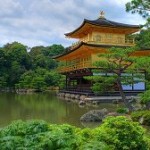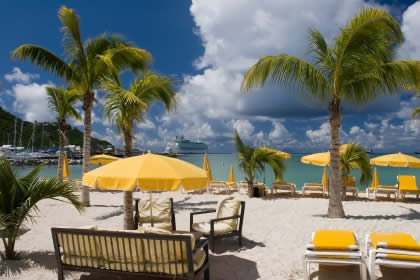A visit to Asia wouldn’t be complete without taking in the breathtaking architecture of the continent’s palaces, temples, and castles.
 [/caption]
Changeokgung Palace is one of South Korea's five grand palaces, but it's the one that most princes of the Joseon Dynasty liked the best. It's not hard to see why. Its secret garden was a favorite place for archery games and fireworks displays, with its lotus ponds and landscaped lawns. The building itself strives to blend in to its natural surrounds, a revolutionary idea for 1405. Sadly much of the palace was destroyed during the Japanese occupation of Korea, so only about a third of its structures remain.
It may not have the rich history of the other buildings we’ve mentioned, but that's no reason to dismiss Coconut Palace in The Philippines. This palace was built under the order of former First Lady Imelda Marcos for Pope John Paul II's 1981 visit. The octagon-shaped building is an excellent example of Filipino design, with its body of hardwood and materials derived from the coconut. There are even more coconuts inside, with coconut chandeliers and furniture inlaid with coconut shells. This quirky building is easily accessible for tourists as it's part of Manila Bay's cultural center complex.
So make sure you get out of the bustling cities while you're traveling around Asia; there are some stunning architectural marvels just waiting to be explored.
[/caption]
Changeokgung Palace is one of South Korea's five grand palaces, but it's the one that most princes of the Joseon Dynasty liked the best. It's not hard to see why. Its secret garden was a favorite place for archery games and fireworks displays, with its lotus ponds and landscaped lawns. The building itself strives to blend in to its natural surrounds, a revolutionary idea for 1405. Sadly much of the palace was destroyed during the Japanese occupation of Korea, so only about a third of its structures remain.
It may not have the rich history of the other buildings we’ve mentioned, but that's no reason to dismiss Coconut Palace in The Philippines. This palace was built under the order of former First Lady Imelda Marcos for Pope John Paul II's 1981 visit. The octagon-shaped building is an excellent example of Filipino design, with its body of hardwood and materials derived from the coconut. There are even more coconuts inside, with coconut chandeliers and furniture inlaid with coconut shells. This quirky building is easily accessible for tourists as it's part of Manila Bay's cultural center complex.
So make sure you get out of the bustling cities while you're traveling around Asia; there are some stunning architectural marvels just waiting to be explored.
